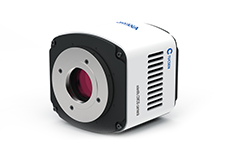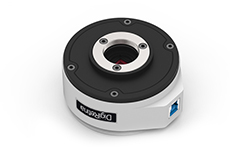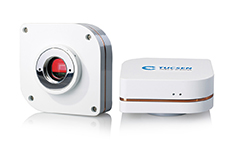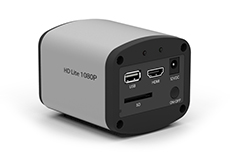.jpg)
.jpg)
A New Breakthrough, for New Discoveries!

.jpg)
95% @ 550nm, super-high quantum efficiency
The Dhyana 400BSI, like the Dhyana95, uses a back-illuminated sCMOS thinned chip technology to avoid light interference from the wiring layer of the sensor and improve the light-receiving area and thus the photoelectric conversion efficiency, as shown: At 550 nm, the quantum efficiency is as high as 95% This cannot be matched by front illuminated sensorsand is comparable to the sensitivity of an EMCCD.

<1.0e-@CMS, ultra-low readout noise
Back-illuminated technology opens a new era of high sensitivity applications for sCMOS. The Dhyana400BSI achieves a key technological breakthrough in back-illuminated sCMOS, a readout noise of less than 1 electron using CMS processing technology.This will bring about an unparalleled advantage of signal-to-noise ratio!
.png)
What is "CMS"?
CMS (correlated multiple sampling), reduces the readout noise by taking several samples of both the reset and signal levels of a pixel output, these are then summed and the average level for each is calculated. This results in a noise reduction proportional to the square root of the number of samples taken.
Built in signal enhancement algorithm
The Dhyana 400BSI features an embedded signal enhancement algorithm that can effectively improve the signal to noise ratio, as shown in the figure.
.png)
6.5μm size, higher image resolution
Not only does the Dhyana 400BSI make breakthroughs in two key performance areas, quantum efficiency and readout noise, but also the smaller 6.5-micron pixel size is the key factors in obtaining more resolution detail in microscopy . As shown in the figure, the Dhyana 400BSI shows even greater detail with the same exposure time in very low light conditions.







